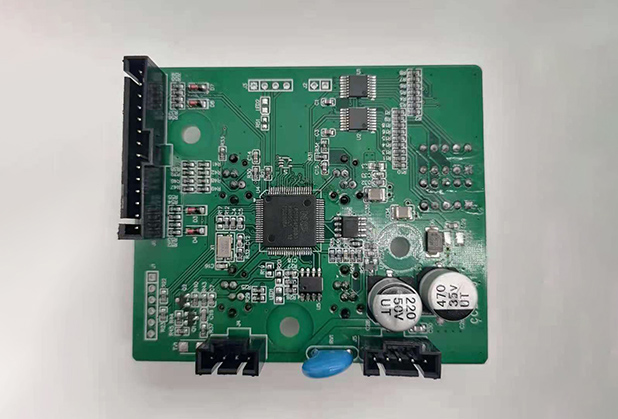1. If the circuit system of the PCB design contains FPGA devices, it is necessary to use the Quartus II software to verify the pin assignments before drawing the schematic. (Some special pins in FPGA cannot be used as ordinary IO).
2. The four-layer PCB design from top to bottom is: signal plane layer, ground, power, signal plane layer; the six layers from top to bottom are: signal plane layer, ground, signal inner electric layer, signal inner electric layer, Power and signal plane layers. For boards with more than 6 layers (advantages: anti-interference, anti-radiation), the internal electrical layer is preferentially routed, but the plane layer cannot be avoided. It is forbidden to route from the ground or power layer (reason: the power layer will be divided, resulting in parasitic effects ).

3. PCB design for the wiring of multiple power supply systems: For example, if the FPGA+DSP system is a 6-layer board, there will generally be at least 3.3V+1.2V+1.8V+5V.
3.3V is generally the main power supply, and the power supply layer is directly laid, and it is easy to distribute the grid through the vias;
5V may generally be the power input, and only a small area needs to be covered with copper. The thicker the better.
1.2V and 1.8V are the core power supplies (if you use wire connection directly, you will encounter great difficulties in the face of BGA devices). Separate 1.2V and 1.8V as much as possible during layout, so that the components connected within 1.2V or 1.8V are compact and connected by copper.
In short, because the power supply network is spread all over the PCB, it will be more complicated if the wiring is used, and the distance will be longer, so the copper laying method is a good choice!
4. The wiring between adjacent layers of the PCB design adopts a cross method, which can not only reduce the electromagnetic interference between parallel conductors, but also facilitate wiring.
5. PCB design analog and digital should be isolated. How to isolate them? When laying out, separate the components used for analog signals from those used for digital signals, and then cut on the AD chip!
The analog signal is laid with an analog ground, and the analog ground/analog power supply is connected to the digital power supply through an inductor/magnetic bead.
6. PCB design based on PCB design software can also be regarded as a software development process, software engineering. The focus is on the idea of "iterative development" to reduce the probability of PCB errors.
(1) Check the schematic diagram, pay special attention to the power supply and grounding of the equipment (power supply and grounding are the blood vessels of the system, and there must be no negligence);
(2) PCB package drawing (confirm whether the pins in the schematic diagram are wrong);
(3) After confirming the PCB package size one by one, add a verification label and add it to the package library of this design;
(4) Import the netlist and adjust the signal sequence in the schematic during layout (the automatic numbering function of OrCAD components after layout is no longer used).